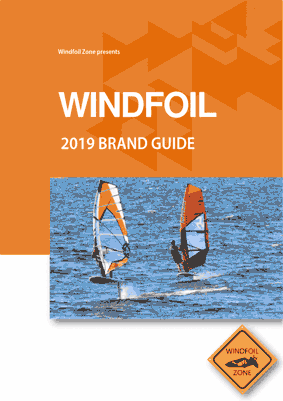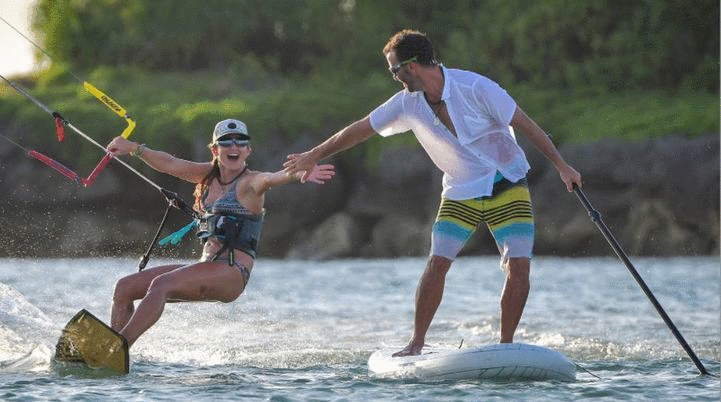Meet Benjamin Tillier, windfoiling's godfather
- Romain
- Apr 19, 2018
- 4 min read
Windfoil Zone has had the honnor of interviewing Benjamin Tillier, who has been one of the main driving forces behind the whole foiling movement. He explains his views on foiling, and his vision for the future development of the sport.
Name: Benjamin Tillier
Age: 33
Citizenship: French
Home spot: New Caledonia
Windfoil Zone:
Benjamin, could you give us a little glimpse into your personal life?
Benjamin Tillier:
I’m a Physiotherapist in Noumea, I’m married and I have a little boy who is 2 years old.
I have been testing hydrofoils for the past 5 years and coaching some young New Caledonian sailors!

Swell in New Caledonia - picture Valerie Mouren / ValloonPhotographie
WZ: Tell us about windfoiling. When did your windfoil journey begin, and what role have you had in the development of the sport?
BT: In 2012, I decided to stop competing in windsurf Olympic class and discovered Kitefoil in Marseille with Georges Paya and Renaud Madier.
I was amazed by the potential of the hydrofoil in light wind and in upwind abilities! I was lucky to live the quick progression of kitefoil, and as a windsurfer I started to work on a windfoil as we saw Bruno Andre doing during his first flights.
In only few weeks, we managed to adapt a foil on a classic windsurf board with a GP Foil!
It’s a great pleasure to work on the foils, the sails, the boards, and the equipment with experts, engineers, professionals etc…
It’s enriching and fascinating to test them out on the water, to share my thoughts and opinions, to make modifications, and to progress on many factors.
WZ: Kitefoiling has been around for a few years now. In your opinion, why did it take so long for windfoiling to become a commercial success?
BT: The commercial success of windfoiling came when the big brands started to have confidence in the potential of the windfoil.
First, when you don't know about hydrofoil you might think, "You’re in the air and so what? You can’t even feel the water, not interesting..."
But then when you get lucky and can test out foiling in ideal weather conditions you discover this feeling of playing with a whole new dimension and all the possibilities!
Then finally you are dreaming of flying day and night!
WZ: 2017 was the real take off for windfoiling, with many brands entering the market. Are there enough places for that many brands?
BT: Many brands and many people have a lot of ideas on how to develop the discipline and people are interested in innovation!
However, making a foil is one thing; making a lot of high quality foils is another thing. Windfoil is progressing very quickly so actually every brand can be lucky and succeed with innovation, even the smaller brands.
WZ: Windfoil brands seem to focus on innovations that boost performance (light wind or speed). However, our impression is that the mass market wants entry foils, less expensive - even if they are slightly less performant. Do you think brands are answering the market’s needs?
BT: In the future, I think that we will see 3 categories of Windfoilers:
- The Playing foilers: just for the foil feeling, foiling jibes, freeride, and why not freestyle foil?
- The Racing foilers: course racing but also just for a ride all around in light wind (a bit like open class and raceboard were?)
- The Speed foilers: for all the guys who just want to go fast from 7 knots of wind!
Each category will need to offer an easy "low cost" foil for beginners and another more performant foil (probably much more expensive).

"One foot" - Picture: Antoine Lorin
WZ: What are the next innovations you think will arrive on the market in the next couple of years?
BT: On the foils, we still have to work on the stiffness, maybe using Titanium very soon for the fuselage for example. In the future, we’ll maybe see other kinds of hydrofoils.
On the sails, there is still some progress needed as the sail doesn’t react the same way in windfoiling as it does in windsurfing, and stability of the sail is more important than its power. The weight of the sail is also an important factor in windfoil.
The Boards will progress for each category (Playing, Racing, and Speed)
The equipment of the windfoiler also has to progress, especially for competition in order to avoid accidents.

WZ: Windfoiling is still very young. How do you see the evolution of the sport going forward? Is it just a just a fad or a real revolution of modern windsurfing?
BT: Windfoil is part of the windsurf family, it’s just a new toy to pass more time playing in (or above!) the water, or to transform crappy conditions into paradise!
As you say, it’s just the beginning of windfoil, but I think it will have a nice future as we can see all kind of windsurfer, waverider, freestyler, slalomer, freerider, competitor in Olympic Class, Formula, PWA etc., etc., from all ages who want to try windfoiling!
WZ: Benjamin, thank you for answering our questions. The last word is yours. Do you have anything to add to finish off this interview?
BT: Just two words: Good flights!

Race Jibe - Picture: Patrice Morin







Comments